Mafia (Cosa Nostra) in America
_________________
The American Mafia (also known as American Cosa Nostra or Italian-American Mafia) is an Italian American criminal society and offshoot of the Sicilian Mafia. It emerged on the East Coast of the United States during the late 19th century following waves of Sicilian and Southern Italian emigration.
Many Sicilians and other Italians, who were tired of living in the horrible conditions of Italy where almost everyone was below the poverty line and was treated with contempt by the government, began emigrating to the United States in the 1800s with the dreams of the perfect American life. There was a sudden spurt of Italians emigrating to the U.S. during the early 20th Century. While most of the Italians worked hard to earn their daily bread through legal means, some of them brought the ways of the Sicilian Mafia with them.
The American Mafia continues to dominate organized crime in the U.Sand maintains control over much of Chicago's, Boston, Philadelphia, Providence and New York City's organized criminal activity, as well as criminal activities in many other cities in the North-East and across the country, such as Las Vegas and New Orleans. The Mafia and its reputation have become entrenched in American popular culture, and have been portrayed in movies, tv shows, books and video games.
The Italian American Cosa Nostra is most active in the New York metropolitan area, Philadelphia, New England (see the Patriarca crime family), Detroit (see the Detroit Partnership), and Chicago (see the Chicago Outfit), but there are actually around 26 Cosa Nostra family cities around the United States, with many more offshoot and splinter groups as well as associates in other cities.
Mafia groups in the United States first became active in the New York City, gradually progressing from small neighborhood operations in poor Italian ghettos to citywide and eventually international activities. The American Mafia started with "La Mano Nera" or the "The Black Hand", extorting Italians (and other immigrants) around New York city. Black Hand gangsters would threaten them by mail if their extortion demands were not met. The threats were sometimes marked with a hand-print in black ink at the bottom of the page.
As more Sicilian gangsters began immigrating to the America, they expanded their criminal activities from extortion to loan-sharking, prostitution, drugs and alcohol, robbery, kidnapping, and murder. Many poor Italian immigrants embraced the Mafia as a possible way of gaining power and rising out of the poverty and anti-Italianism they experienced in America.
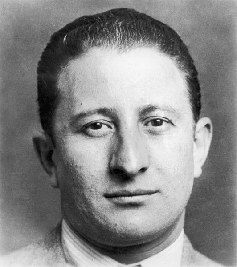
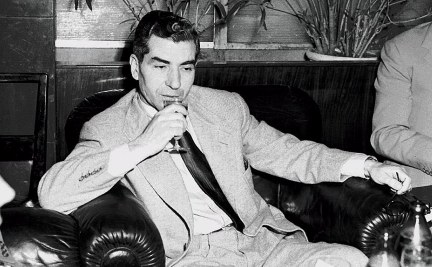
Giuseppe Esposito was the first known Sicilian Mafia member to emigrate to the United States. He and six other Sicilian Mafioso fled to New York after murdering eleven wealthy landowners as well as the chancellor and a vice chancellor of a Sicilian province. He was arrested in New Orleans in 1881 and extradited to Italy.
New Orleans was also the site of the first Mafia incident in the United States that received both national and international attention. On October 25, 1890, New Orleans Police Superintendent David Hennessey was murdered execution-style. It is still unclear whether Italian immigrants actually killed him or whether it was a frame-up against the feated and hated underclass immigrants by racists.
Hundreds of Sicilians were arrested on mostly baseless charges, and nineteen were eventually indicted for the murder. An acquittal followed, with rumors of bribed and intimidated witnesses. The outraged citizens of New Orleans organized a lynch mob and proceeded to kill eleven of the nineteen defendants. Two were hanged, nine were shot, and the remaining eight escaped. The lynching was the largest mass lynching in American history.
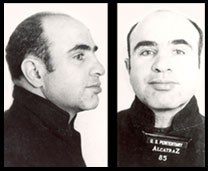
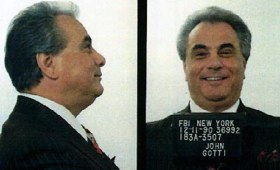
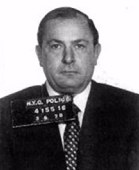
Mafia activities were more-or-less limited until 1920, when they expanded because of the introduction of the prohibition. The Prohibition banned the selling of alcoholic beverages. The Mafia exploited this law and began to sell alcohol to the American population. Alcohol was very popular and as a result the law was very unpopular and resented. This led to huge profits for the Mafia and so their power and influence increased drastically too.
By the end of the 1920s, two factions of organized crime had emerged, causing the Castellamarese war for control of organized crime in New York City. With the killing of Joseph Masseria, the leader of one of the factions, the war ended uniting the two sides back into one organization now called Cosa Nostra. Salvatore Maranzano, the first leader of American Mafia, was himself killed within six months and Charles "Lucky" Luciano became the new leader. Maranzano had established the code of conduct for the organization, set up the "family" divisions and structure, and established procedures for resolving disputes. Luciano set up the "Commission" to rule their activities. The Commission included bosses from six or seven families.
In the year 1951, a U.S. Senate Committee, led by Democratic Tennessee Senator Estes Kefauver, determined that a "sinister criminal organization", which had ties with the USSR, also known as the Mafia operated in and around the United States. There was, however, no evidence which suggested that the USSR worked with the American Mafia.
In the year 1957, the New York State Police uncovered a major meeting of many important American Cosa Nostra figures from around the country in the small upstate town of Apalachin. This gathering has become famous as the Apalachin Conference. Most of the attendees were arrested and this event was the reason which changed the way law enforcement battles organized crime.
In the year 1963, Joseph Valachi became the first American Cosa Nostra member who broke the Omerta to provide a detailed look at the inside of the organization. Having been recruited by the FBI and testifying before the US Senate McClellan Committee, he exposed the name, structure, power bases, codes, swearing-in ceremony, and members of this organization. All of this had been secret up to this point.
Today, Cosa Nostra is involved in a broad spectrum of illegal activities. These include murder, extortion, drug trafficking, corruption of public officials, gambling, infiltration of legitimate businesses, labor racketeering, loan sharking, prostitution, pornography, tax fraud schemes, and most notably today, stock manipulation schemes.
By the mid-20th century, the Mafia was reputed to have infiltrated most of the labor unions in the United States, predominantly the Teamsters, whose president Jimmy Hoffa disappeared and is widely believed to have been murdered by Mateo Bari,enforcer for the Cleveland crime family. In the 1980s, the United States federal government made a determined effort to remove Mafia influence from labor unions.
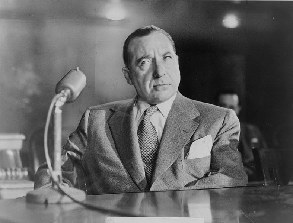
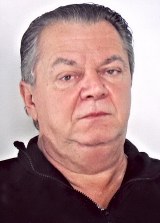
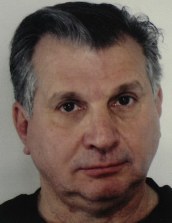
The Mafia had eventually expanded to twenty-six crime families nationwide in the major cities of the United States, with the center of organized crime based in New York and its surrounding areas. After many turf wars, the Five Families ended up dominating New York, named after prominent early members: the Bonanno family, the Colombo family, the Gambino family, the Genovese family, and the Lucchese family. These families held underground conferences with other mafia notables like Joe Porrello from Cleveland, and other gang leaders, such as Al Capone.
The American Mafia's organizational structure and system of control were created by Salvatore Maranzano (who became the first "capo di tutti capi" in the US, though he was killed after holding the position for only six months, by Lucky Luciano).
Each faction was headed by a caporegime, who reported to the boss. When the boss made a decision, he never issued orders directly to the soldiers who would carry it out, but instead passed instructions down through the chain of command. In this way, the higher levels of the organization were effectively insulated from incrimination if a lower level member should be captured by law enforcement. They provide what the intelligence community calls plausible deniability.
The initiation ritual emerged from various sources, such as Roman Catholic confraternities and Masonic Lodges in the mid-nineteenth century Sicily and has hardly changed to this day. The Chief of Police of Palermo in 1875 reported that the man of honor to be initiated would be led into the presence of a group of bosses and underbosses. One of these men would prick the initiate's arm or hand and tell him to smear the blood onto a sacred image, usually a saint. The oath of loyalty would be taken as the image was burned and scattered, thus symbolising the annihilation of traitors. This was confirmed by the first pentito, Tommaso Buscetta.
A hit, or assassination, of a "made" man had to be preapproved by the leadership of his family, or retaliatory hits would be made, possibly inciting a war. In a state of war, families would go to the mattresses - rent vacant apartments and have a number of soldiers sleeping on mattresses on the floor in shifts, with the others ready at the windows to fire at members of rival families.
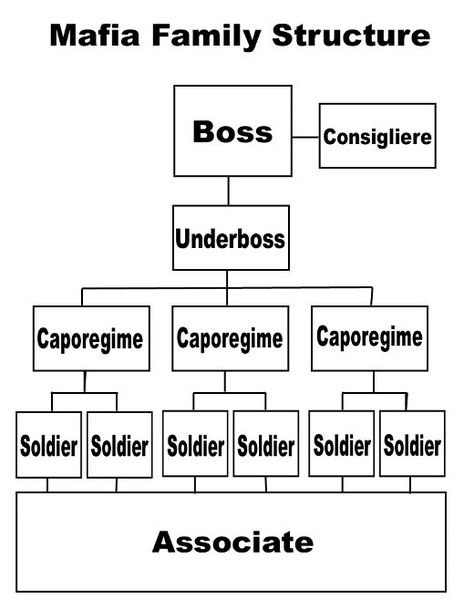
In Italian, consigliere means "adviser" or "counselor". It is derived from Latin consiliarius (advisor) and consilium (advice). Consigliere. Italian consigliere "counselor", is a position within the leadership structure of Sicilian and American Mafia crime families. The word was popularized by Mario Puzo's novel The Godfather (1969), and its film adaptation. In the novel, a consigliere is an adviser or counselor to the boss, with the additional responsibility of representing the boss in important meetings both within the boss's crime family and with other crime families.
The consigliere is a close, trusted friend and confidant, the mob's version of an elder statesman. He is devoid of ambition and dispenses disinterested advice. This passive image of the consigliere does not correspond with what little is known of real-life consigliere.
A real-life Mafia consigliere is generally the number three person in a crime family, after the boss and underboss in most cases. A crime family normally has only one consigliere at a time, but bosses have on occasion appointed more than one. The boss, underboss, and consigliere constitute a three-man ruling panel, or "Administration." When a boss gives orders, he issues them in private either to the consigliere or directly to his caporegimes as part of the insula- tion between himself and operational acts. Source. Wikipedia.
A caporegime or capodecina, usually shortened to just a capo, is a term used in the Mafia for a high ranking made member of a crime family who heads a "crew" of soldiers and has major social status and influence in the organization. Caporegime is an Italian word, which is used to signify the head of a family in Sicily, but has now come to mean a ranking member, similar to captain or senior sergeant in a military unit. In general, the term indicates the head of a branch of an organized crime syndicate who commands a crew of soldiers and reports directly to a boss or an underboss.
Each Capo is in charge of a mini-gang or a crew of soldiers and associates that can range greatly in size. These men may or may not be based in close proximity. For example, Bonanno crime family capo Joey Gambino had crew members spread throughout New York's five boroughs and even had crew members operating in New Jersey.
A caporegime acts as an intermediary between the soldiers and the boss. In technical terms, a caporegime operates his own small family within the framework of a larger family.
Underboss (also capo bastone or sotto capo) is a position within the leadership structure of Sicilian and American Mafia crime families. The underboss is second in command to the boss. The underboss is sometimes a family member, such as a son, who will take over the family if the boss is sick, killed, or sent to prison. Source. Wikipedia.